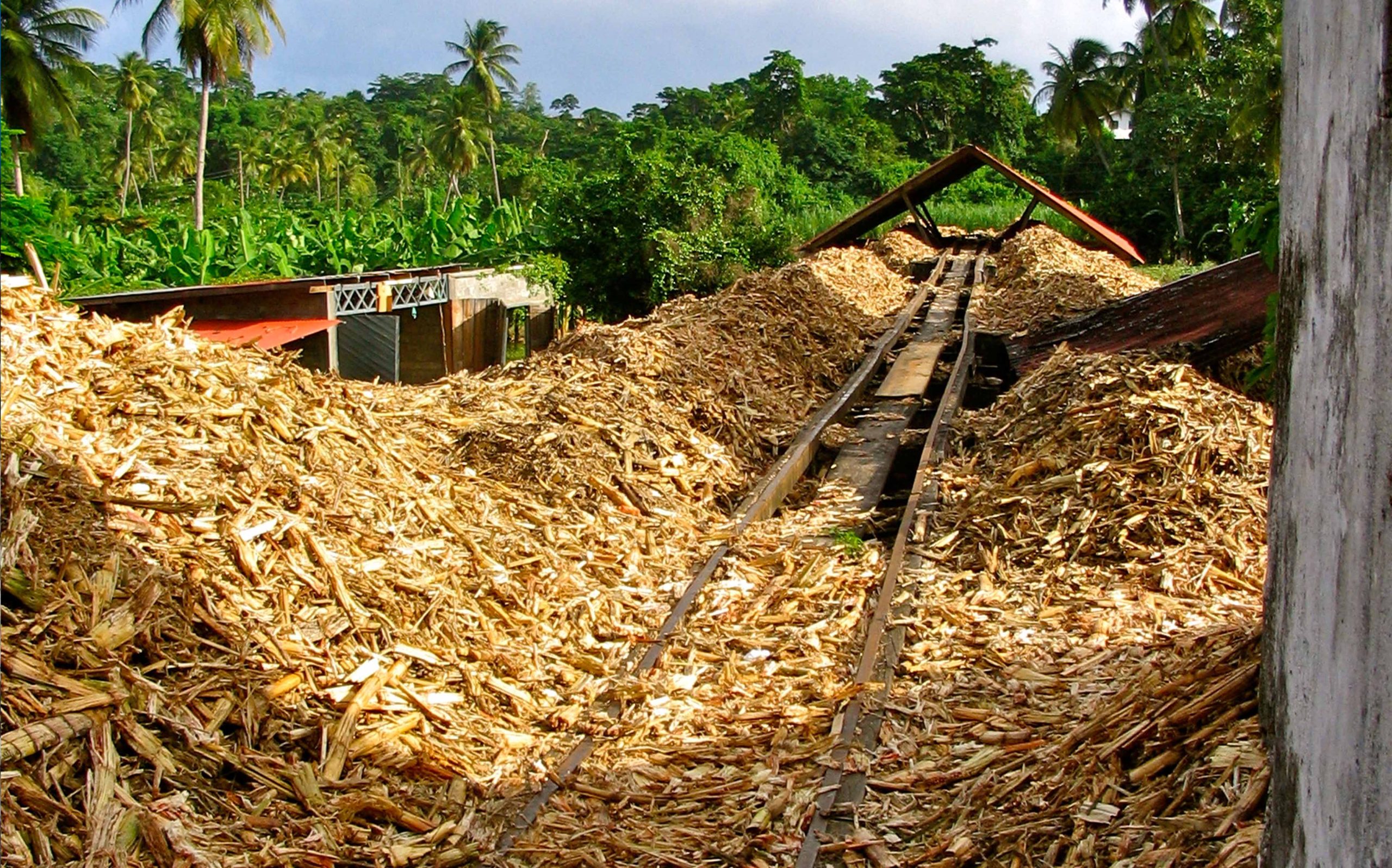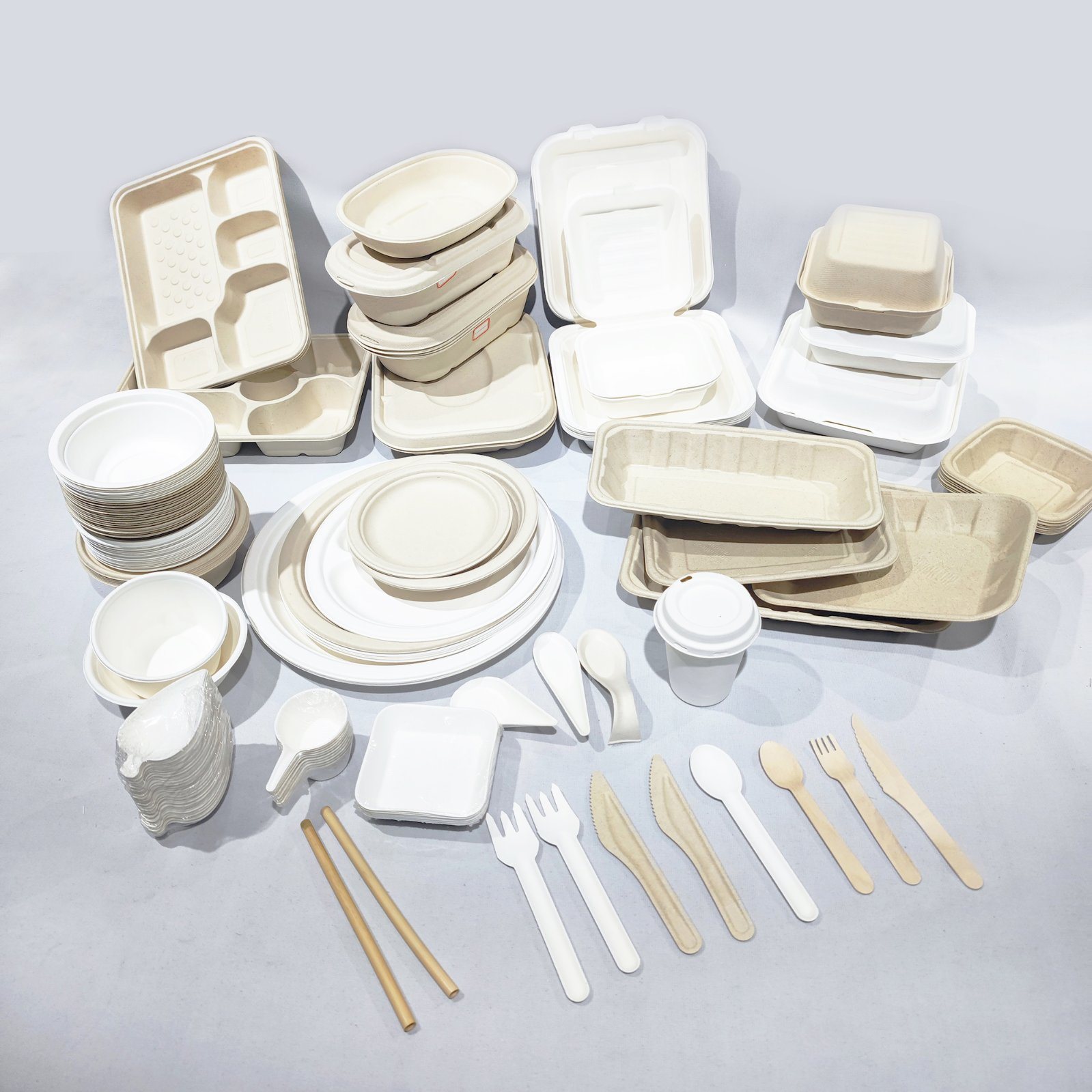The food industry has witnessed a significant shift towards sustainability in recent years, with businesses and consumers alike seeking more eco-friendly alternatives. In this pursuit of sustainability, one solution has emerged as a game-changer: tableware made from sugarcane bagasse. This eco-friendly material has the potential to revolutionize the food service sector by offering a greener and more sustainable approach to dining. In this comprehensive guide, we will explore the rise of sugarcane bagasse tableware produced by sugarcane bagasse tableware making machine, its environmental benefits, its role in the food industry, and the potential for a greener tomorrow.

The Sugarcane Bagasse Advantage
Sugarcane bagasse is the fibrous byproduct remaining after sugarcane has been crushed to extract its juice for sugar production. Historically, bagasse was often considered waste, but it has gained attention in recent years for its potential to be transformed into valuable products, particularly tableware. Let’s delve into the advantages that sugarcane bagasse brings to the table:
Renewable Resource: Sugarcane is an annually renewable crop, making bagasse an abundant and sustainable resource.
Biodegradable: Sugarcane bagasse is biodegradable, meaning it naturally breaks down over time, reducing the burden on landfills.
Low Carbon Footprint: The production of sugarcane bagasse tableware typically has a lower carbon footprint compared to traditional plastic or foam alternatives.
Chemical-Free: Bagasse tableware is generally free from harmful chemicals, making it safe for food contact.
Versatile: Sugarcane bagasse can be molded into various tableware items, such as plates, bowls, cups, and cutlery.
Sturdy and Functional: Bagasse tableware possesses the strength and durability required for most dining needs, even for hot and liquid foods.
Elegant Appearance: Bagasse tableware has an aesthetically pleasing, natural look, making it a great choice for eco-conscious consumers.
The Environmental Imperative
Sugarcane bagasse tableware is increasingly becoming the preferred choice in the food industry due to its profound environmental benefits. Here are the key ways in which it addresses pressing environmental concerns:
Reducing Plastic Pollution: By replacing single-use plastic tableware with bagasse alternatives, the food industry can significantly reduce the plastic waste that pollutes the environment, particularly oceans and waterways.
Minimizing Landfill Waste: As a biodegradable material, sugarcane bagasse tableware decomposes naturally, lessening the burden on landfills and reducing methane emissions.
Conserving Resources: Utilizing sugarcane bagasse as a resource encourages responsible land use and promotes the sustainable cultivation of sugarcane.
Cutting Carbon Emissions: The production process for bagasse tableware often generates fewer greenhouse gas emissions compared to traditional plastic production.
Supporting Sustainable Practices: Choosing bagasse tableware encourages responsible and sustainable sourcing, potentially reducing deforestation and conserving natural habitats. Use pulp moulding machine to make tableware now.

The Role of Sugarcane Bagasse Tableware in Food Businesses
Sugarcane bagasse tableware is making its presence felt in the food industry across various segments, from fast-food chains to fine dining restaurants, catering services, and food stalls. Here’s how this eco-friendly tableware is making an impact:
Food Packaging: Bagasse-based containers, such as clamshells, takeout boxes, and salad bowls, are ideal for packaging a wide range of food items. They keep food hot and fresh, making them popular in the takeaway and food delivery sector.
Restaurant Dining: Many restaurants and cafes now serve their dishes on sugarcane bagasse plates, bowls, and platters. The natural look of bagasse tableware complements a wide array of culinary presentations.
Event Catering: Sugarcane bagasse tableware is a preferred choice for event catering services, where it offers the dual benefit of being eco-friendly and convenient for large gatherings.
Street Food Vendors: Food vendors and stalls at street markets and food festivals have adopted bagasse tableware as a sustainable alternative to conventional plastic or foam.
School Cafeterias: Educational institutions have also embraced the shift to eco-friendly dining by using bagasse tableware in their cafeterias.
Eco-Conscious Brands: Brands that prioritize sustainability and eco-friendliness are using bagasse tableware to align with their values and appeal to eco-conscious consumers.
Financial Considerations
While the environmental benefits of sugarcane bagasse tableware are clear, it’s essential to consider the financial aspects of incorporating this sustainable alternative into food businesses. Key financial considerations include:
Cost of Tableware: Bagasse tableware can be cost-competitive with traditional plastic or foam options. However, prices may vary based on the specific product, quality, and supplier.
Consumer Demand: Assess the level of consumer demand for eco-friendly dining options, as this can influence pricing and profitability.
Market Positioning: Consider how positioning your business as eco-friendly and sustainable may attract a specific customer base willing to pay a premium for sustainable practices.
Storage and Handling Costs: Bagasse tableware may have different storage and handling requirements than plastic alternatives, which can affect operational costs.
Regulatory Compliance: Ensure that your choice of tableware complies with local regulations and health standards for food contact materials.
Sourcing and Suppliers: Establish relationships with reliable suppliers to ensure consistent access to bagasse tableware.
Profitability Assessment
To determine the profitability of incorporating sugarcane bagasse tableware into your food business, several factors must be evaluated:
Pricing Strategy: Determine a pricing strategy that balances your costs, market competition, and consumer willingness to pay for sustainable dining options.
Product Mix: Consider the range of bagasse tableware products you will offer and how they align with your menu and business model.
Consumer Education: Educate your customers about the benefits of bagasse tableware and your commitment to sustainability, as this can create goodwill and loyalty.
Cost Control: Continuously review and optimize your operational processes to reduce costs and improve efficiency.
Marketing and Branding: Leverage your sustainable practices as a unique selling proposition (USP) and use marketing channels to convey your commitment to eco-friendliness.
Sustainability and Environmental Marketing
Embracing sugarcane bagasse tableware is not just an operational decision; it can also be a powerful marketing tool. Promoting your business as eco-friendly and sustainable can attract environmentally conscious consumers and differentiate you from competitors. Here are some ways to leverage sustainability in your marketing efforts:
Eco-Friendly Branding: Incorporate messaging and branding that highlights your use of sugarcane bagasse tableware and commitment to environmental responsibility.
Educational Content: Create content, such as blog posts, social media updates, or in-store materials, that educate customers about the environmental benefits of bagasse tableware.
Certifications: If your bagasse tableware is certified by relevant sustainability organizations, display these certifications prominently.
Collaborations: Collaborate with local environmental organizations or sustainability initiatives to showcase your support for green causes.
Customer Engagement: Engage with customers on social media or through email marketing to share sustainability updates and solicit feedback or suggestions.
Sugarcane Bagasse Tableware: A Greener Tomorrow
The adoption of sugarcane bagasse tableware represents a significant step towards a more sustainable and eco-conscious food industry. With its abundance, renewability, and biodegradability, sugarcane bagasse offers a promising solution to the environmental challenges posed by single-use plastic tableware. As the trend towards sustainability continues to grow, businesses that embrace sugarcane bagasse tableware position themselves as environmentally responsible and gain a competitive edge in a market increasingly focused on eco-friendliness. Besides, the paper can be recycled to make egg trays by paper egg tray machine. Use these machines to make a better tomorrow.
In conclusion, sugarcane bagasse tableware is not only a greener choice for the food industry but also a key driver of positive change in the way we approach dining and food service. As consumers become more environmentally aware, businesses that prioritize sustainability and offer eco-friendly dining options have the potential to thrive in a greener, more responsible tomorrow. By making the switch to sugarcane bagasse tableware, food businesses can contribute to a more sustainable future while also reaping the benefits of cost-effectiveness and customer loyalty.